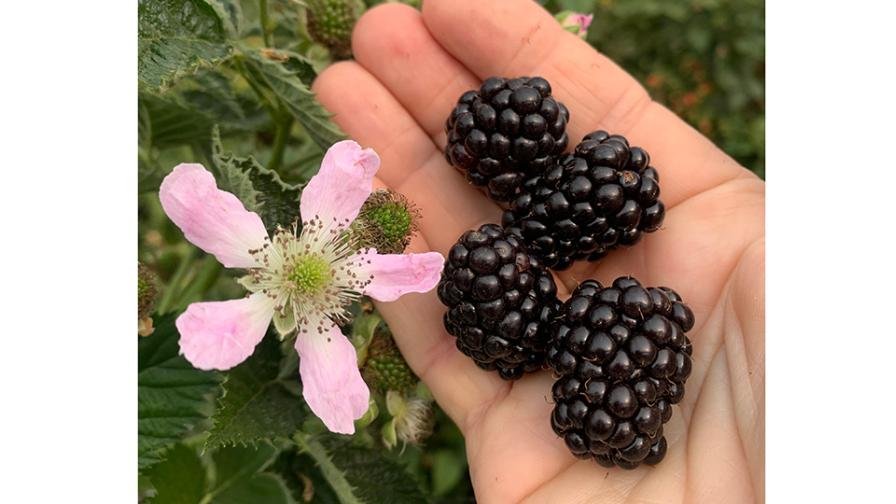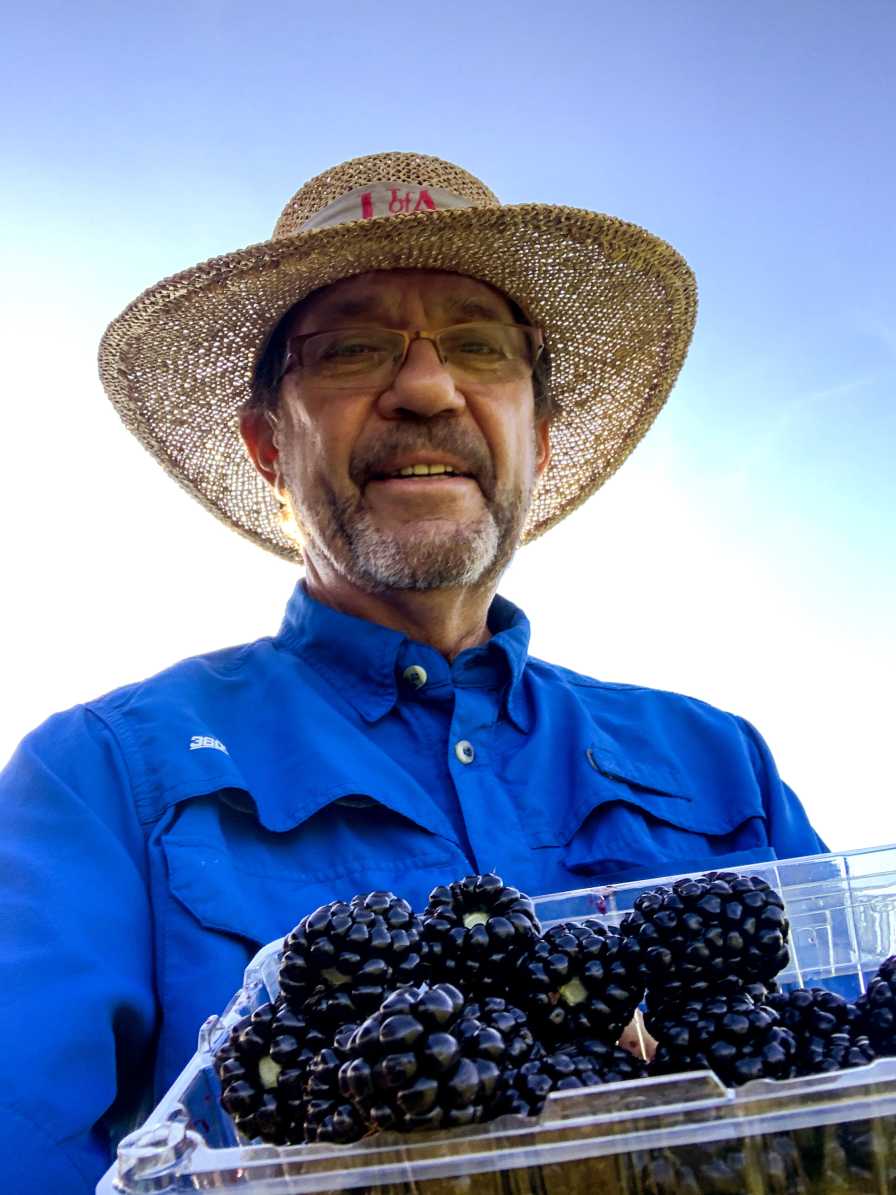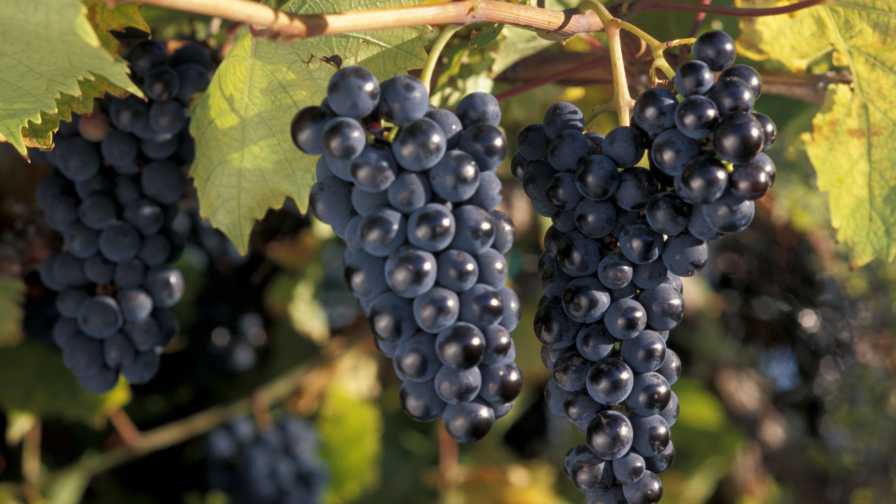Big Changes on the Horizon for the Blackberry Market
Approximately 75% of commercial blackberries sold in retail markets in the U.S. are produced in Central Mexico. Production area in this region has been estimated to be more than 25,000 acres, by far the largest blackberry production area in the world. The Mexican blackberry industry developed in the 1990s after the introduction of the Brazilian variety ‘Tupi’.
There has been some mention of year-around production of blackberries in Mexico, but this has not been common, as the rainy season of the summer has substantial impact on fruit quality. It has often been commented that Mexican blackberry production is the key to keeping blackberries on U.S. retail shelves. Mexican blackberries have a huge influence on the quality perception of this “fourth berry” due to the market share they hold.
Originating in southern Brazil, and an offspring of the University of Arkansas variety ‘Comanche’, ’Tupi’ requires several cultural manipulations to fruit in the no-chill environment of Central Mexico. Strategies include stressing the plants, defoliating, pruning, and applying growth regulators. These management practices replace the chilling requirement (often estimated to be 100 to 200 hours) and allow bloom and harvest to spread throughout the harvest season.
This same cultural regimen is required for all floricane-fruiting varieties but cannot be implemented on varieties with a higher chilling requirement. Although it is estimated ‘Tupi’ maintains one-half or more of Mexican acreage, it has encountered several problems in recent years, including increased impact of Fusarium wilt, causing plant decline and quality reduction.
NEW VARIETIES
Likewise, several new varieties have been introduced with improved fruit quality, especially by Driscoll’s, including ‘Elvira’, ‘Rebecca’, and ‘Laurita’. The quality bar is rising for Mexican blackberries, and this opens the door for new cultivars to replace ‘Tupi’.
Another key component in the variety shift is the incorporation of the primocane-fruiting trait in new introductions. This trait allows fruit to be produced on current-season canes, skips the chilling requirement blackberries normally have, and may eventually replace floricane-fruiting varieties. Fewer management inputs further encourage a shift to varieties with this trait.
A number of breeding programs have begun in Mexico to more effectively develop varieties adapted to the region. This is commonly a key component of variety development success: breeding in the environment provides the greatest success potential.

The new ‘Sultana’ blackberry bred in Spain by Planasa is an exciting development and has a strong primocane-fruiting expression.
Photo by John R. Clark
Many American consumers have had ‘Sweet Karoline’ blackberries from Mexico. This variety has exceptional low-acid flavor, an attractive aromatic profile, and great postharvest-handling potential. Bred in Mexico by Expoberries, it has created substantial excitement.
Two new varieties from Giddings Fruit include ‘Aketzali’ and ‘Amelali’. Hortifrut has introduced ‘Madeline’ and ‘Fenomenal’ in recent years. There are a number of other varieties that have been released by various other Mexican and U.S. programs, and some of these have the potential to make major impacts. And as is usually the result of continued breeding, the varieties will get better and better over time as quality, yield, and other traits are improved.
NEW METHODS
Parallel to variety development, improved cultural methods along with enhanced postharvest handling will further impact the Mexican blackberry industry. One challenge seen in Mexico is the shift from floricane-fruiting to primocane-fruiting varieties, where growers have had difficulty shifting from the cultural manipulation methods required on floricane-fruiting varieties and embracing the ease of management of primocane-fruiting varieties. I have spent many years teaching about primocane vs. floricane-type plants in the classroom, but I am now convinced the blackberry plants have never attended my lectures.
A blackberry plant does not always clearly “fit” in either category when genetics and environment are changed. Further development of the most efficient management tools with the new genetics will further advance Mexican production.
Some U.S. growers have expressed concern about competition with Mexican blackberries, particularly with the U.S. harvest periods that overlap with Mexican production. Mexican blackberry harvest begins in September and October and extends to May and June. This is a valid concern since the wholesale price is impacted by Mexican production, and this affects prices attained by U.S. growers.
However, there have been continued preferences by many marketers for U.S.-grown blackberries. This is encouraging for domestic producers, and we must keep in mind that maintaining availability of quality blackberries year-around is key to keeping this exceptional berry growing in demand and sales.
Let the berry good times roll!










